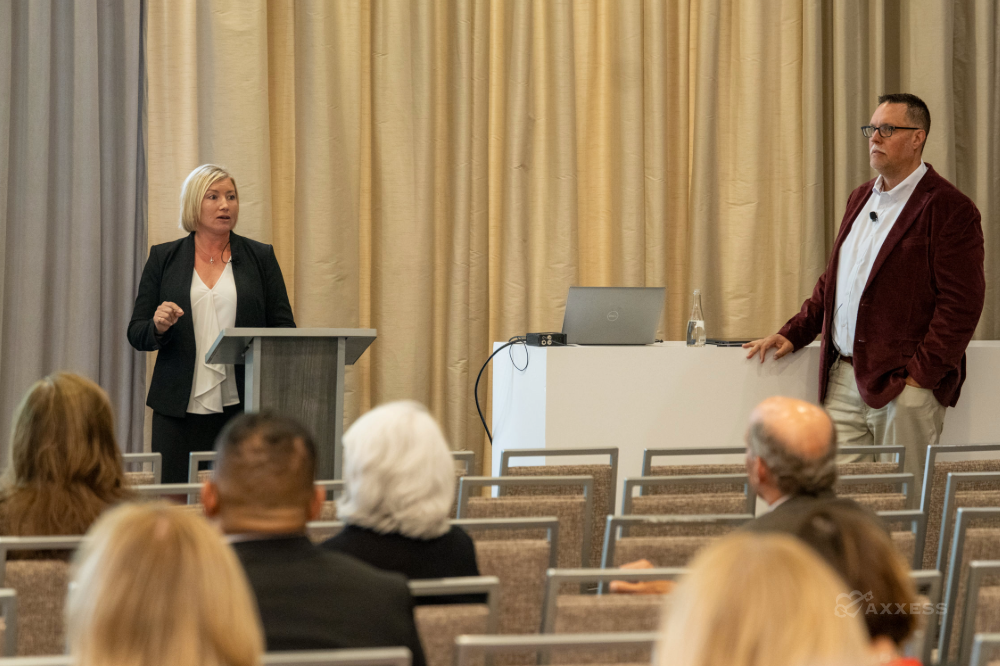
Artificial intelligence (AI) has become one of the most talked about innovations in healthcare, but in hospice and palliative care, the conversation goes deeper. It’s about trust, communication and designing technology that respects human experience.
At the 2025 Axxess Growth, Innovation and Leadership Experience (AGILE), Stacy Ollinger, CEO at Caleb Healthcare Group, and Jason Banks, Vice President of Business Development at nVoq, discussed how AI can be integrated into hospice and palliative care environments.
Balancing Technology and Human Workflow
AI implementation in healthcare requires a balance between technical capabilities and human workflow integration.
“Banks highlighted the importance of trust in AI systems.
“If the clinician doesn’t trust it, you have nothing,” Banks said. “It’s not going to work.”
Ollinger provided an example of where machine learning was used to predict 30-day mortality rates. Success depended not only on technology, but also on clinician involvement and thoughtful communication design.
Addressing Gaps and Change Management
Ollinger and Banks emphasized that AI is not just about tools; it starts with people.
Ollinger illustrated the need for communication skills training to effectively utilize AI tools. She recalled that clinicians often avoided screenings for depression due to a lack of referral resources.
“Clinicians didn’t want to screen for depression,” Ollinger said. “Not because they didn’t care, but because they didn’t know where to refer patients. If you don’t have a next step, you’re not going to ask the question.”
Banks reinforced the point from an organizational level.
“You need executive buy-in, not just at the top,” Banks emphasized. “Frontline managers, directors, clinicians – if any part of the chain isn’t aligned, the whole thing suffers.”
These are the kinds of conversations that continue in Axxess’ AI webinar series. In these webinars, industry experts and care leaders explore ways to integrate AI while maintaining the human touch that defines quality care.
Standardizing Processes
While human engagement is essential, AI implementation also requires structure, clarity and a well-defined purpose.
“You really have to have good structure, process, and a plan around what you’re looking to achieve and be organizationally ready for that change,” Banks explained.
The panelists stressed the value of standardized processes, particularly in a hospice setting, where documentation, workflows and communication practices can differ. Without a strong foundational structure, AI only magnifies inefficiencies.
AI as a Human Tool
In hospice and palliative care, AI should amplify and not replace the human connection.
“It’s not the tech that you’re generally solving,” Banks explained. “It’s really about the workflow engineering, having the team bought in and reducing friction.”
With the right preparation, leadership, and mindset, organizations can unlock the full potential of AI without losing the heart of care.
With more than 550 attendees, more than 50 sponsors and countless connections made, AGILE 2025 was a massive success for everyone. Click here to register for AGILE 2026, May 4-6 in Dallas.
